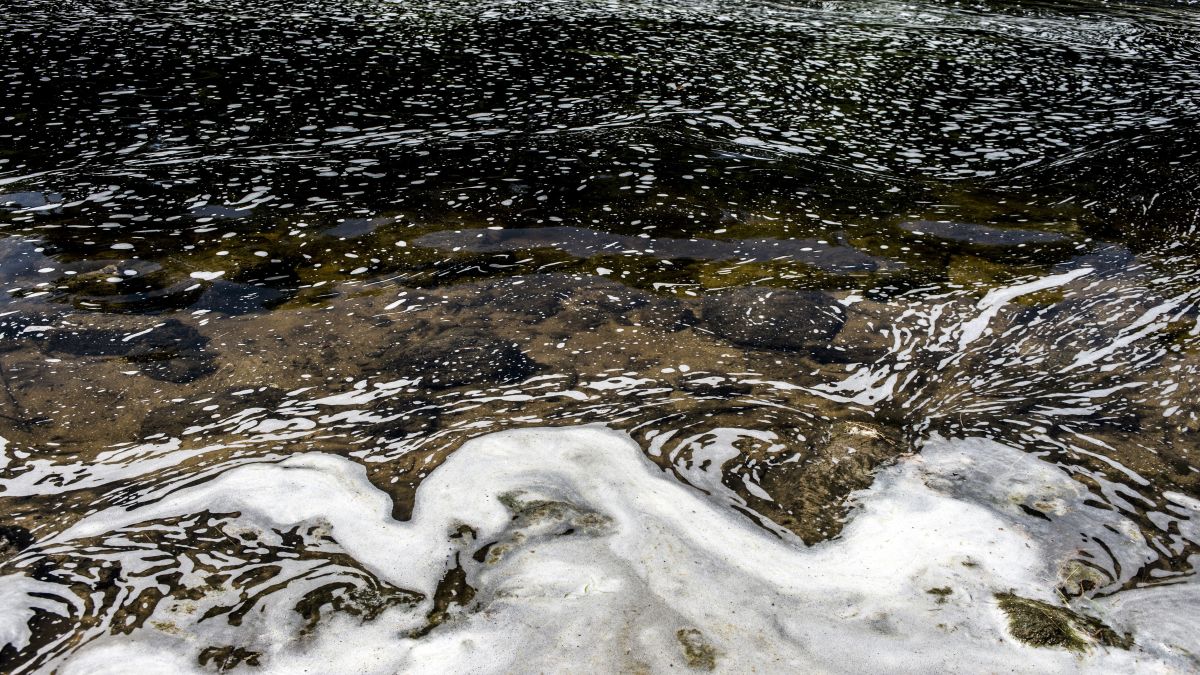They never leave your body, if consumed once.
PFAS, the human-made substance, also known as ‘forever chemicals’ are associated with some serious health issues, including liver damage, high cholesterol, thyroid disease, obesity, fertility issues and cancer. It is even feared that the chemicals can cause low birth weight, developmental delays, and behavioural changes in infants and children.
Recently, a new study suggests that dangerous concentrations of these chemicals have been found in surface and groundwater worldwide. The three countries — Australia, the United States and Europe — emerged as hotspots.
Here’s what the findings suggest.
What the research reveals
A paper published in the journal Nature Geoscience analysed data from 45,000 water samples globally and found a “substantial fraction” had levels of PFAS — per- and polyfluoroalkyl substances — above recommended levels.
Found in everyday products such as non-stick frying pans, food packaging and waterproof clothing, the substances have been linked to serious health conditions including cancer and birth defects.
They have been found everywhere from turtle eggs to Antarctic snow, but the latest study showed they were prevalent in surface water and groundwater used by humans for drinking.
“Many of our source waters are above PFAS regulatory limits,” said Denis O’Carroll, one of the study’s authors and a professor at the University of New South Wales in Australia.
Impact Shorts
More ShortsO’Carroll said it was already known that the thousands of types of forever chemicals were “pervasive in the environment” but he expressed shock at how much higher the sampled levels were compared with recommended levels.
“We’re talking above five per cent, and it goes over 50 per cent in some cases.”
The research found that 69 per cent of groundwater samples from around the world surpassed Canada’s minimum standards and six per cent of samples surpassed the EU’s standard.
Australia, China, the United States and parts of Europe were shown to be global hotspots of high concentrations of PFAS.
However, the study acknowledged that these locations were also areas with the highest level of testing, and with more research, comparable results could be found across the globe.
PFAS is considered to be spread across the globe, but the extent of contamination on the earth’s surface and in waterways and drinking supplies is unknown.
Canada, the United States, the European Union and Australia have begun restricting the use of PFAS amid health and environmental concerns.
What are PFAS?
Per- and polyfluoroalkyl substances (PFAS) are synthetic chemicals first developed in the 1940s to withstand intense heat and repel water and grease.
They have since been used in several household and industrial products, including food packaging, makeup, stain-proof fabric, non-stick pots and pans, and foam to fight fires.
Because PFAS take an extremely long time to break down — earning them the nickname “forever chemicals” — over the years they have seeped into the soil and groundwater, getting into our food chain and drinking water in the process.
These chemicals have now been detected virtually everywhere on Earth, from the top of Mount Everest to inside human blood and brains.
The two most researched PFAS compounds have already been banned or restricted in many countries, though they remain detectable throughout the environment.
Perfluorooctanoic acid (PFOA), which was once used to make the non-stick cookware coating Teflon, was in December classified as “carcinogenic to humans” by the International Agency for Research on Cancer (IARC).
The World Health Organisation agency said there is “sufficient evidence” that PFOA gave animals cancer during experiments, as well as “limited evidence” of renal cell and testicular cancer in humans.
Perfluorooctane sulfonic acid (PFOS) — once the key ingredient in the Scotchgard fabric protector — was, meanwhile, ruled “possibly carcinogenic to humans.”
There was limited proof of cancer in animals but “inadequate evidence regarding cancer in humans,” the IARC said.
How PFAS can affect your health
Thought to be associated with an increased rate of cancer, obesity, thyroid, liver and kidney disease, higher cholesterol, low birth weight, infertility and even a lower response to vaccines, the level of risk can vary based on the PFAS exposure. According to the researchers, almost everyone has at least a little PFAS in their bodies.
According to the IARC, people who work directly with PFAS chemicals while manufacturing products are most at risk of serious exposure. The exact level of PFAS exposure that is hazardous to health has been debated.
Previously, guidelines in numerous countries ruled that having less than 100 nanograms of PFAS per litre of tap water was enough to protect health.
But the United States has proposed lowering the limit to four nanograms of PFOA and PFOS per litre — and the EU is considering following suit.
Environmentalists and health experts across the world have been increasingly sounding the alarm about forever chemicals.
For people at home, it is nearly impossible to avoid consuming minuscule amounts of PFAS. However, experts recommend reducing contact with non-stick cookware and grease-proof food packaging, such as fast-food wrappers.
Drinking filtered or bottled water and storing leftovers in glass — not plastic — containers could also help.
With inputs from AFP
)